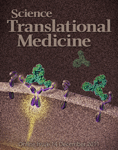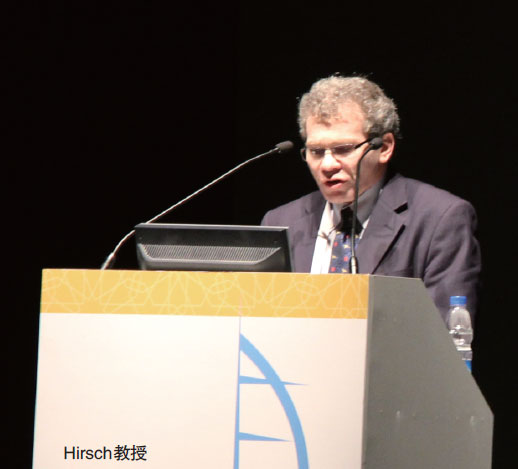STM:FGF21有望成为糖尿病治疗新靶点
2011-12-20 MedSci原创 MedSci原创
近日,国际著名杂志《科学—转化医学》Science Translational Medicine刊登了Genentech 公司的研究人员的研究成果“Amelioration of Type 2 Diabetes by Antibody-Mediated Activation of Fibroblast Growth Factor Receptor 1”,研究人员介绍了一种替代FGF21生长因子蛋白

近日,国际著名杂志《科学—转化医学》Science Translational Medicine刊登了Genentech 公司的研究人员的研究成果“Amelioration of Type 2 Diabetes by Antibody-Mediated Activation of Fibroblast Growth Factor Receptor 1”,研究人员介绍了一种替代FGF21生长因子蛋白治疗方法的新策略,推出了对抗高血糖的新抗体,这将有助于糖尿病药物研发。
糖尿病是一种由多种病因引起的以慢性高血糖为特征的代谢紊乱,伴有因胰岛素分泌和/或作用缺陷引起的糖、脂肪和蛋白质代谢异常。II型糖尿病以胰岛素抵抗为主,伴胰岛素分泌不足,至以胰岛素分泌不足为主伴胰岛素抵抗,在没有足够胰岛素供应的情况下,身体无法将血糖从血液中运送到那些用糖作为能源的细胞内。相反,糖会在血液中积聚,并大肆破坏心脏、血管、神经、眼睛甚或皮肤。
目前临床上利用重组蛋白FGF21(成纤维细胞生长因子)治疗II型糖尿病,以及其它肥胖相关的疾病,但是这种临床应用缺乏药代动力学基础。在这篇文章中,研究人员提出了一种替代性策略,利用拮抗抗FGFR1(FGF受体1)抗体——R1MAbs模拟FGF21的作用,结果表明这种抗体可以降低糖尿病小鼠的血糖水平。
研究人员通过给小鼠使用抗体,在一周的时间里,这些接受了抗体注射的糖尿病小鼠的血糖,相比于对照组,出现了变化,降低至正常的水平,并且未出现任何副作用表现,这一治疗过程还帮助糖尿病小鼠减轻了体重。
总而言之,研究人员认为脂肪组织中的FGFR1能作为FGF21的主要功能性受体,也是PGC-1α的上游调控因子,因此可以用于糖尿病,以及其其它肥胖相关的疾病中,抗体为基础的治疗的重要靶标。而且值得关注的是研究还表明这一抗体在体内能长时间发挥作用,因此未来可利用这一新策略开发针对糖尿病的新药。
Science Translational Medicine杂志是一份去年Science新出版的子刊,由美国国立卫生研究院(NIH)前任院长伊莱亚斯·瑞尔霍尼出任期刊的首席科学顾问,周刊主要关注加速将我们在生物机制研究领域的惊人进展转化为预防和治疗人类疾病的新方法。(生物谷Bioon.com)
延伸阅读:
Amelioration of Type 2 Diabetes by Antibody-Mediated Activation of Fibroblast Growth Factor Receptor 1
Wu, Ai-Luen; Kolumam, Ganesh; Stawicki, Scott; Chen, Yongmei; Li, Jun; Zavala-Solorio, Jose; Phamluong, Khanhky; Feng, Bo; Li, Li; Marsters, Scot; Kates, Lance; van Bruggen, Nicholas; Leabman, Maya; Wong, Anne; West, David; Stern, Howard; Luis, Elizabeth; Kim, Hok Seon; Yansura, Daniel; Peterson, Andrew S.; Filvaroff, Ellen; Wu, Yan; Sonoda, Junichiro
Clinical use of recombinant fibroblast growth factor 21 (FGF21) for the treatment of type 2 diabetes and other disorders linkedto obesity has been proposed; however, its clinical development has been challenging owing to its poor pharmacokinetics. Here,we describe an alternative antidiabetic strategy using agonistic anti-FGFR1 (FGF receptor 1) antibodies (R1MAbs) that mimicthe metabolic effects of FGF21. A single injection of R1MAb into obese diabetic mice induced acute and sustained ameliorationof hyperglycemia, along with marked improvement in hyperinsulinemia, hyperlipidemia, and hepatosteatosis. R1MAb activatedthe mitogen-activated protein kinase pathway in adipose tissues, but not in liver, and neither FGF21 nor R1MAb improved glucoseclearance in lipoatrophic mice, which suggests that adipose tissues played a central role in the observed metabolic effects.In brown adipose tissues, both FGF21 and R1MAb induced phosphorylation of CREB (cyclic adenosine 5′-monophosphate responseelement–binding protein), and mRNA expression of PGC-1α (peroxisome proliferator–activated receptor-γ coactivator 1α) andthe downstream genes associated with oxidative metabolism. Collectively, we propose FGFR1 in adipose tissues as a major functionalreceptor for FGF21, as an upstream regulator of PGC-1α, and as a compelling target for antibody-based therapy for type 2 diabetesand other obesity-associated disorders.
本网站所有内容来源注明为“梅斯医学”或“MedSci原创”的文字、图片和音视频资料,版权均属于梅斯医学所有。非经授权,任何媒体、网站或个人不得转载,授权转载时须注明来源为“梅斯医学”。其它来源的文章系转载文章,或“梅斯号”自媒体发布的文章,仅系出于传递更多信息之目的,本站仅负责审核内容合规,其内容不代表本站立场,本站不负责内容的准确性和版权。如果存在侵权、或不希望被转载的媒体或个人可与我们联系,我们将立即进行删除处理。
在此留言











It's great to read something that's both enjoyable and provides prtasgaimdc solutions.
173
#糖尿病治疗#
0
#STM#
65
#新靶点#
66
#FGF21#
72
#治疗新靶点#
82